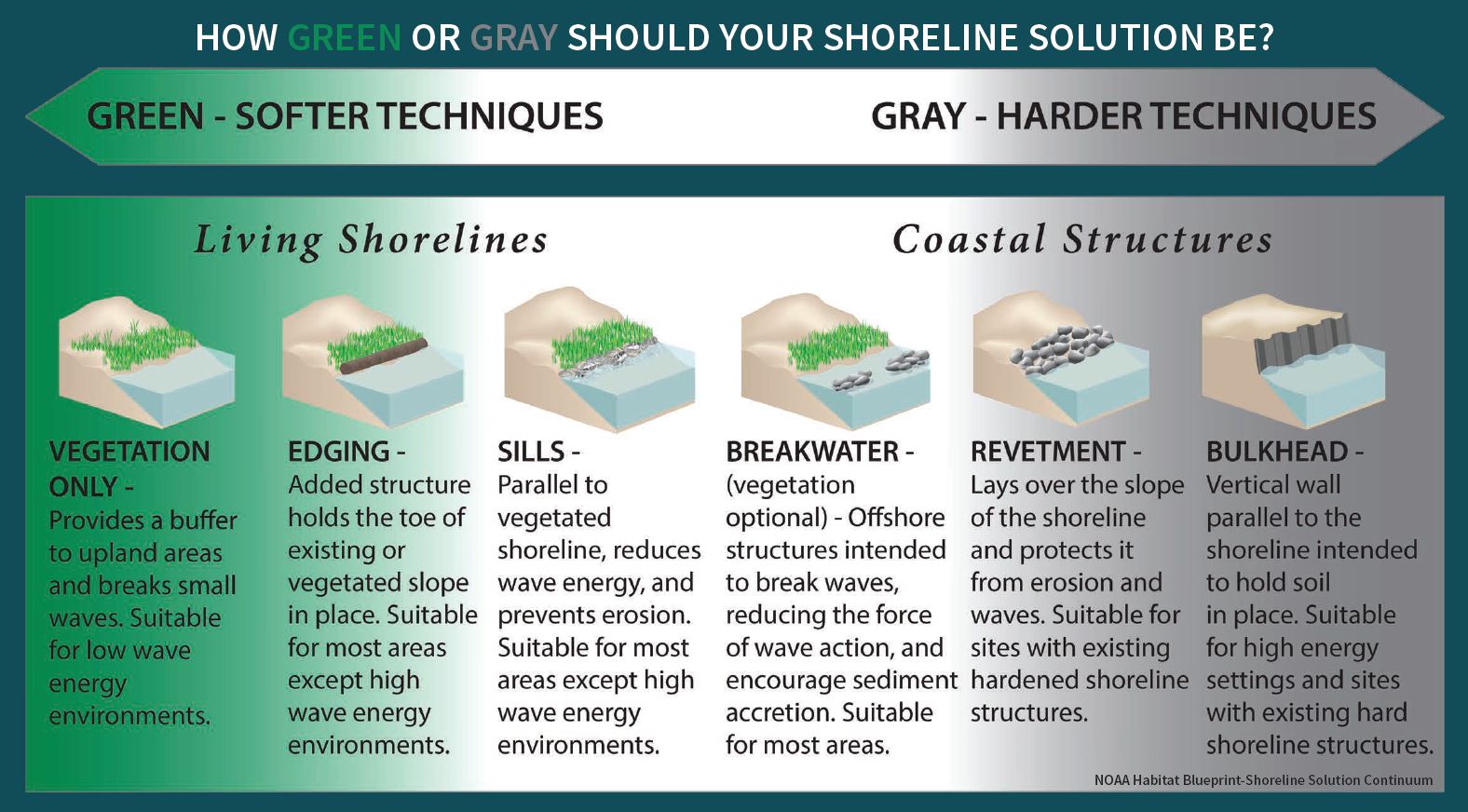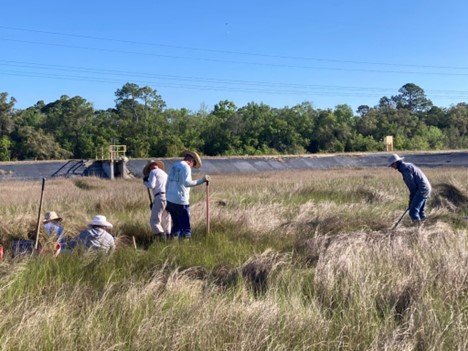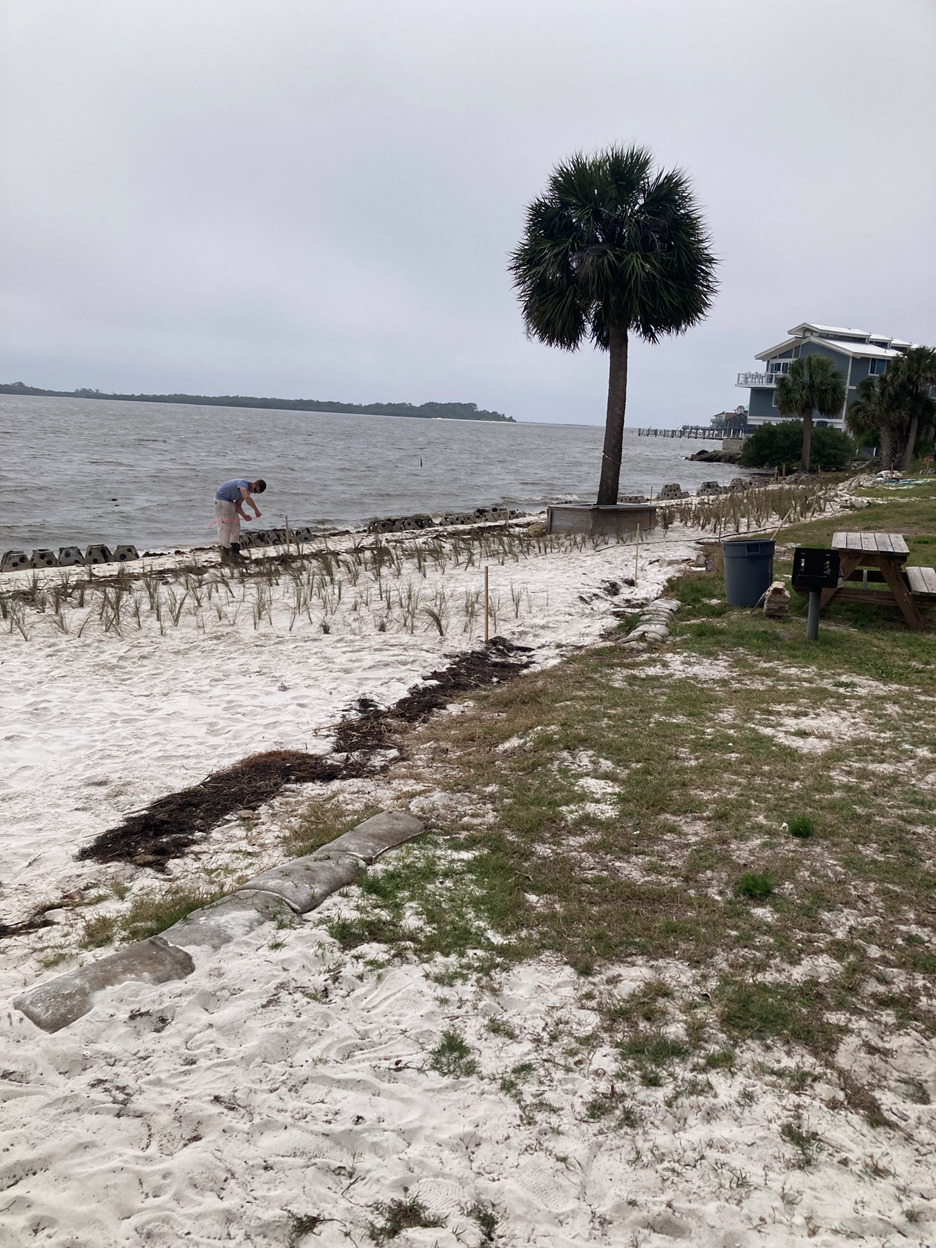Guest post by: Jackie Hill, Old Fenimore Mill (OFM) Homeowners’ Association
Living Shoreline Master Plan Inspires OFM Living Shoreline
On March 19, 2019 Savanna Barry, the Regional Specialized Extension Agent based in Cedar Key, FL at the UF/IFAS Nature Coast Biological Station of the University of Florida posted her “Living Shoreline Master Plan for Cedar Key” blog. It captured the interest of Old Fenimore Mill Condominiums because we knew we needed to address our beach erosion but did not know which of the below shoreline erosion solutions was suitable. Her blog was perfect as it provided the local-scale guidance we needed.


The map above shows the best shoreline management practices for Cedar Key. Different colors represent the different shoreline erosion interventions recommended by the model for each section of shoreline. The project type recommended for Old Fenimore Mill was beach nourishment with breakwaters and the option of vegetation enhancement.
So now we knew what kind of shoreline project we needed but recognized that we could not navigate the complex regulatory environment on our own. With Savanna’s help we were able to apply for a grant to help us navigate those waters. Two years later, we have the grant and the engineering designs, which are inspired by a combination of the nearby G street and Airport Road living shoreline projects.
The donor marsh at Duke Energy’s Mariculture Center
Savanna next put us in touch with Eric Latimer, who works at Duke Energy’s Mariculture Center. As Jessica Wells, in the title of her article about Eric and the center, says: “32 years and millions of fish later, he’s still finding ways to help Florida”.
With Mark Clark, Associate Professor at University of Florida, as our sponsor, we were met at the gate by Eric Latimer, who has been working at Duke Energy’s Crystal River Mariculture Center since it opened 32 years ago. The Mariculture Center started as an environmental compliance requirement for Duke Energy to operate its nearby power plants. Eric has raised and released nearly 5 million fish and crustaceans along the west coast of Florida where Duke Energy has power plants and customers. But as the Duke’s plants closed, it was no longer required to release fish. But by then, the Mariculture Center had grown into one of Florida’s most successful hatcheries, and the state’s marine environments needed more help than ever due to the affect declining water quality and flow was having on fish populations and habitats. Instead of closing the center, Latimer decided to find ways to work with nonprofits, universities, and state agencies to improve Florida’s environment.

Now, he is restocking waters statewide and is growing grasses to restore Florida’s beaches and coasts. In addition, with his team, he has released more than 60,000 redfish to offset effects of red tide, donated fish to food banks to help people during the pandemic, hosted science camps for students, and offered the center to researchers studying fish migration. The center has also expanded its mission to include submerged aquatic vegetation for lake and spring restoration projects as well as mangroves and marsh grasses to improve living shorelines. “That’s the beautiful thing about what Duke Energy is doing. It’s not just about our service territory anymore,” Latimer said. “It’s about what’s good for the state.”
The OFM marsh grass harvest and planting
We gathered a truck load of Spartina patens (high marsh) grasses, almost 900 large tufts, worth approximately $8,500 that day, at no charge to us. The University of Florida volunteers gathered as much or more for the G street project. This is part of Duke Energy’s doing what is good for the State of Florida. So we thank Drs. Savanna Barry and Mark Clark for their guidance; which grass to harvest, how much, what tools to bring, how to plant and water post planting. We thank Duke Energy and Eric Latimer for willingly opening their center to us to harvest what we needed at no cost to us.


The grasses from Duke are now planted in the upper zone (above the Mean High Water Line). The next stages in our journey are to finalize the engineering design and obtain the necessary permits. Once completed, we will be able to finish this journey by placing reef prisms and planting low marsh grasses (like those seen at G street) near the shoreline and place the oyster reef balls (donated by CCA Florida) in the water (like reefs off Airport Road). We hope this journey continues by maintaining our beach for use by kayakers, horseshoe crabs and red knot birds.
In Jessica Well’s article she quoted Eric saying: “There’s something to be said for leaving a legacy of conservation”. There’ve never been truer words spoken.
 1
1
